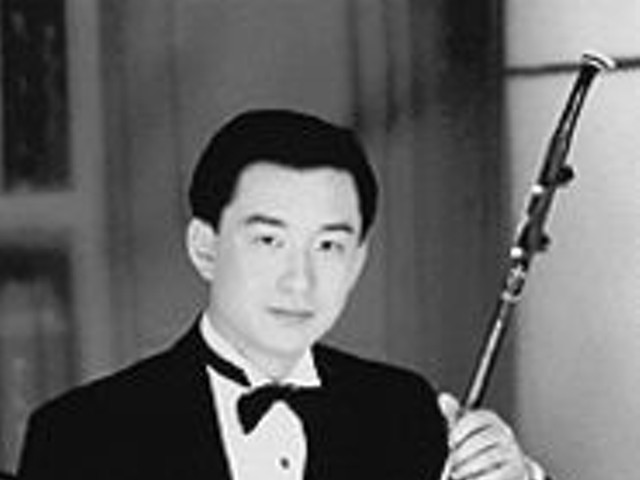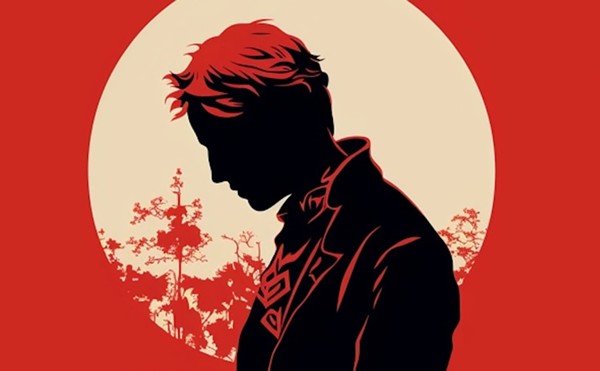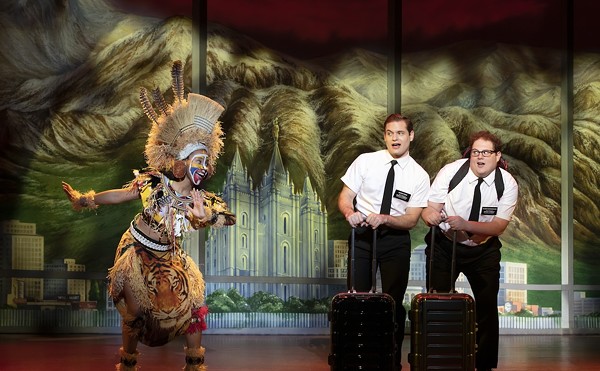Most of Hassell's paintings feature animals -- fish, birds, butterflies, turtles -- painted so flatly and in colors so electric that one is tempted to read them as decoys. These living creatures inhabit equally stylized landscapes and seascapes where shadows are often brighter than the things that cast them and plants appear to be transferred from stencils or copied from tapestries.
The stylized, patterned quality of Hassell's images is at once appealing and repellent. In "Wake Up Call," a rooster, painted in hypnotic colors, hovers in front of the stylized plant motif borrowed from a Victorian wallpaper pattern by William Morris. Hassell drains Morris' pattern of all "life," using only the bare outlines of its plant forms as a mechanical-looking stand-in for natural vegetation.
Hassell's works often make subtle observations on the cultural cross-fertilization resulting from patterns of trade and commerce. In "Paradigm," Hassell explains, the background pattern derives from "an Anglicized version of a pattern of Asian origin which conceivably arrived in Europe by way of the silk trade." "Paradigm" is one of the largest paintings in the show, posing the most rewarding visual and intellectual challenge to the viewer.
It's often difficult to distinguish whether Hassell's paintings are flat or full of a complex kind of depth. In paintings like "On the Jacks Fork," a deep landscape is punctuated by a group of yellow birds that appear to be plastered obliviously across the surface of the painting. These images are humorous and highly intelligent -- a rare combination to be found in painting these days.
A footnote: You should again be warned against reading those pesky artist statements. Hassell's actually announces his uncritical interest in the philosophy of Carl Jung and the writings on mythology by Joseph Campbell. (Weren't the '70s over a few decades ago?) Fortunately, those influences don't show up in any obvious way in the paintings, so the viewer is spared.





